TRICHOPOLUM (Metronidazole) 250 mg, 20 tablets
$10.00
Description
One tablet contains
- Active ingredient – metronidazole 250 mg,
- Excipients: potato starch, gelatin, glucose solution, magnesium stearate.
Pharmacological properties
Pharmacokinetics
Suction
Metronidazole is readily absorbed from the gastrointestinal tract (minimum 80%). Only in small quantities is absorbed by intravaginal administration.
After taking the drug at a dose of 250 mg, 500 mg or 2 g by healthy volunteers, the maximum plasma concentration in the period of 1-3 hours was 4.6 – 6.5 μg / ml, 11.5 – 13 μg / ml and 30, respectively. 45
mcg/ml. The presence of food reduces the rate of absorption and reduces the maximum concentration of metronidazole in the blood serum.
Approximately 20% of metronidazole binds to blood proteins.
Distribution
Metronidazole is widely distributed in tissues and body fluids, including bile, bones, saliva, peritoneal fluid, vaginal secretions, seminal fluid, cerebrospinal fluid, brain and liver tissues. It also penetrates the placental barrier and is excreted in breast milk at a concentration comparable to the level of the drug in the blood plasma.
Biotransformation
Approximately 30-60% of oral metronidazole is biotransformed in the liver by hydroxylation, oxidation and conjugation with glucuronic acid.
The main metabolite 2-hydroxymetanidazole also has antibacterial and antiprotozoal activity.
breeding
The biological half-life of metronidazole (T½) in adults with normal liver and kidney function is 6-8 hours. In patients with impaired liver function, the half-life of metronidazole may increase.
Metronidazole and its metabolites are excreted mainly through the kidneys 60-80%. Only 6-15% of metronidazole is excreted in the feces. Renal clearance is 10-10.2 ml/min. Urine may be dark or red-brown in color due to the presence of water-soluble dyes, which are biotransformation products of the drug.
Few studies indicate that the renal excretion of metronidazole is reduced in elderly patients.
Metronidazole can be removed from the body by hemodialysis, while peritoneal dialysis is ineffective.
Pharmacodynamics
Trichopol is a derivative of 5-nitroimidazole, which has antiprotozoal and antibacterial action.
Trichopolum easily penetrates into protozoa and bacteria. The oxidoreduction potential of Trichopolum is less than that of ferredoxin, a protein that transports electrons. This protein is present in anaerobic and aerobic bacteria. The potential difference leads to the reduction of the Trichopolum nitro group. Reduced form
Trichopolum inhibits the synthesis of DNA of microorganisms, which causes their death.
Trichopolum is active against Trichomonas vaginalis, Giardia lamblia, Entamoeba histolytica and Balantidium coli .
It also has a strong bactericidal effect against anaerobic bacteria; Gram-negative rods: Bacteroides species including the Bacteroides fragilis group (B. fragilis, B. distasonis, B. ovatus, B. thetaiotaomicron, B. vulgatus), Fusobacterium species; gram-positive rods: Eubacterium, Clostridium; Gram-positive cocci: Peptococcus species, Peptostreptococcus species .
Trichopolum has no bactericidal action against most aerobic and partially anaerobic bacteria, fungi and viruses.
Indications for use
– infections caused by anaerobic bacteria of the genus Bacteroides, Fusobacterium, Clostridium, Eubacterium, anaerobic cocci and Gardnerella vaginalis, as well as the protozoa Trichomonas vaginalis, Entamoeba histolytica, Giardia lamblia and Balantidium (Trichomonas infection, bacterial vaginitis, amoebiasis, giardiasis, acute ulcerative gingivitis, acute periodontitis)
– surgical anaerobic infections (sepsis, bacteremia, peritonitis, brain abscess, pneumonia, osteomyelitis, postpartum sepsis, abscess in the pelvic area, endometritis, inflammation of surgical wounds after surgical interventions, trophic ulcers of the lower extremities and bedsores)
– Helicobacter pylori – associated diseases of the stomach (as part of combination therapy, Trichopolum is used to eradicate Helicobacter pylori )
– prevention of postoperative infections caused by anaerobic bacteria (mainly operations on the large intestine, gynecological operations)
Dosage and administration
Prevention of infections caused by anaerobic bacteria
Adults and children over 12 years of age: at the beginning of treatment, 1 g (4 tablets of 250 mg) once, then 1 tablet of 250 mg 3 times a day during or after meals, until the period of immediate preparation of the patient for surgery.
Children aged 6-12 years: 125 mg every 8 hours for 2 days 3-4 days before surgery.
Treatment of infections caused by anaerobic bacteria
Trichopol is used in monotherapy or in combination with other antibacterial agents. Usually the course of treatment does not exceed 7 days.
Adults and children over 12 years old: 1-2 tablets of 250 mg are prescribed 3 times a day during or after meals.
Children 6-12 years old: appoint a dose at the rate of 7.5 mg / kg of body weight 3 times a day during or after meals.
Trichomoniasis
Be sure to treat both partners.
Women: appoint 250 mg (1 tablet 250 mg) 2 times a day in the morning and evening during meals for 10 days or 750 mg in the morning and 1250 mg in the evening for 2 days. Also appoint 2 g of Trichopolum once.
Men are prescribed 250 mg (1 tablet 250 mg) 2 times a day in the morning and evening during meals for 10 days or 750 mg in the morning and 1250 mg in the evening for 2 days. Also appoint 2 g of Trichopolum once.
Children from 6 years to 12 years of age – a dose of 40 mg / kg of body weight orally once or at the rate of 15-30 mg / kg in 2-3 doses for 7 days, not exceeding a dose of 2 g.
Bacterial vaginitis
Adults: 500 mg (2 tablets of 250 mg) in the morning and evening for 7 days or 2 g of Trichopolum once.
Amebiasis
Adults: 750 mg (3 tablets of 250 mg) 3 times a day for 5-10 days.
Children from 6 to 12 years old: 125 mg 3 times a day for 5-10 days.
Giardiasis
Adults are prescribed 500 mg 2 times a day for 5-7 days.
Children 6-10 years old: appoint ½ tablet (125 mg) 3 times a day (daily dose 375 mg);
10 – 12 years: appoint 1 tablet (250 mg) 2 times a day (daily dose of 500 mg).
The drug is taken in the morning and evening, usually for 5 to 10 days. If necessary, the course of treatment can be repeated after 4-6 weeks, which is usually decided by the attending physician.
Eradication of Helicobacter pylori Trichopolum should be taken for at least 7 days in combination with other drugs for the eradication of Helicobacter pylori.
Adults are prescribed 500 mg (2 tablets) 2 times a day for 7 days.
There are no specific instructions for use in children.
Acute ulcerative gingivitis
Adults: 250 mg 2 times a day for 3 days.
Children at the rate of 35-50 mg / kg of body weight per day in 3 divided doses for 3 days.
Acute periodontitis
Adults are prescribed 250 mg 2 times a day for 3-7 days.
Elderly patients should be prescribed the drug with caution, reducing daily doses by 2 times.
Trophic ulcers of the lower extremities and bedsores
Adults: 500 mg 2 times a day for 7 days.
Use in patients with hepatic impairment
In patients with severe hepatic insufficiency, Trichopol is biotransformed slowly, which can lead to the accumulation of Trichopol and its metabolites in the body, especially in patients with hepatic encephalopathy. High plasma concentrations of Trichopolum can in turn cause encephalopathy. The daily dose for such patients is prescribed once, reduced to 1/3 of the usual dose.
Use in patients with renal insufficiency
In renal failure, the biological half-life of Trichopolum does not change. Reducing the dose of the drug in this case is not necessary. In patients on hemodialysis, Trichopolum and its metabolites are removed within 8 hours. Immediately after dialysis, Trichopolum should be re-administered to the patient. In patients on fractional peritoneal dialysis or continuous dialysis, there is no need for dose modification.
Side effects
Often (≥1/100, <1/10)
– metallic taste in the mouth, coated tongue, nausea, vomiting, abdominal discomfort, diarrhea, epigastric pain
Rare (>1/10,000, <1/1,000)
– anaphylaxis, erythema multiforme, skin rashes, pustular rash, skin flushing, itching, urticaria, angioedema
– peripheral neuropathy, manifested by numbness, paresthesia (sense of crawling), in most cases disappearing after discontinuation of the drug or dose reduction; headache, dizziness, weakness, drowsiness, insomnia, syncope, epileptiform seizure, encephalopathy, subacute cerebellar syndrome (ataxia, scanned speech, incoordination, nystagmus, tremor), mental disorders, disorientation, nervousness, depression, hallucinations, convulsions, paralysis
– diplopia, myopia, photophobia, lacrimation, optic neuritis
– tinnitus, hearing loss
– gynecomastia
– vertigo
– dry mouth, glossitis, stomatitis, acute pancreatitis, passing after discontinuation of the drug
– anorexia
– neck stiffness
Very rare (<1/10000)
– changes in the parameters of the liver enzyme system, cholestatic hepatitis and jaundice, passing after discontinuation of the drug, liver failure (requiring liver transplantation in patients receiving metronidazole in combination with other antimicrobials)
– moderate, transient leukopenia, thrombocytopenia, agranulocytosis, pancytopenia, often disappearing after discontinuation of the drug
– flattening of the T wave on the ECG
– myalgia, arthralgia
– dark staining of urine caused by the presence of highly soluble dyes in water resulting from the biotransformation of metronidazole, cystitis, polyuria, dysuria, urinary incontinence
– pain in the vagina, fungal infections
– development of candida infection
In isolated cases
– bone marrow aplasia
– nasal congestion, fever
Contraindications
– hypersensitivity to the components of the drug or to other derivatives of 5-nitroimidazole
– organic lesions of the central nervous system (epilepsy, schizophrenia)
– severe liver failure (including hepatic encephalopathy)
– severe leukopenia (including history)
– pregnancy I trimester, lactation period
– children’s age up to 6 years
– use in children and adolescents under 18 years of age in combination with amoxicillin
– combined reception with disulfiram, alcohol
Drug Interactions
Trichopolum in combination with anticoagulants, derivatives of coumarin, prolongs prothrombin time. Therefore, the dosage of these drugs should be changed.
Drugs that activate the microsomal system of the liver, such as phenytoin and phenobarbital, accelerate the elimination of Trichopolum, which leads to a decrease in its concentration in the blood serum, and drugs that reduce the enzymatic systems of the liver (for example: cimetidine) can prolong the half-life of Trichopolum.
Trichopol belongs to inhibitors of cytochrome P450 3A4 (CYP 3A4) and, therefore, can slow down the biotransformation of drugs that are metabolized by these enzymes.
Trichopol increases the concentration of lithium in the blood and enhances its toxic effect. If the simultaneous use of these drugs is necessary, the concentration of creatinine in the blood serum should be monitored during the period of treatment.
Trichopolum can cause undesirable effects on the part of the circulatory system when interacting with terfenadine and astemizole (QT prolongation on the ECG, arrhythmia).
Trichopol enhances the toxic effect of alcohol. Taking alcoholic beverages during treatment with the drug can cause unwanted reactions, such as a feeling of heat, sweating, headache, nausea, vomiting, epigastric pain.
Simultaneous reception of Trichopolum and disulfiram can sometimes cause acute psychosis and disorientation. Treatment with Trichopolum should be started 2 weeks after the end of treatment with disulfiram.
Trichopolum reduces the clearance of 5-fluorouracil and therefore may increase its toxicity.
With the combined use of metronidazole and cyclosporine, an increase in the concentration of the latter in the blood is observed.
With the simultaneous use of metronidazole and amiodarone, prolongation of the QT interval and torsade de pointes have been reported. When they are taken simultaneously, it may be advisable to monitor the QT interval on the ECG. Patients being treated on an outpatient basis should be advised to contact their doctor if they develop symptoms that may indicate torsade de pointes, such as dizziness, palpitations, or loss of consciousness.
The simultaneous use of metronidazole can significantly increase the plasma concentration of busulfan. The mechanism of their interaction has not been described. Due to the potential risk of severe toxicity and death associated with increased plasma levels of busulfan, its concomitant use with metronidazole should be avoided.
Metronidazole may inhibit the metabolism of carbamazepine and consequently increase its plasma concentrations.
Some antibiotics in some cases can reduce the effectiveness of oral contraceptives by affecting the bacterial hydrolysis of steroid conjugates in the intestine and thus reducing the reabsorption of unconjugated steroids, resulting in a decrease in the plasma level of active steroids. This unusual interaction may occur in women with high biliary excretion of steroid conjugates. Known cases of ineffectiveness of oral contraceptives have been associated with the use of various antibiotics, including ampicillin, amoxicillin, tetracycline, and metronidazole.
Simultaneous use of metronidazole with tacrolimus can lead to an increase in the concentration of the latter in the blood. The probable mechanism for inhibition of hepatic metabolism of tacrolimus is mediated by CYP 3A4. Tacrolimus blood levels and renal function should be monitored frequently and dosages adjusted accordingly, especially after initiation of metronidazole therapy withdrawal in patients stabilized on tacrolimus regimen.
Sulfonamides enhance the antimicrobial effect of metronidazole.
Special instructions
Trichopol should be used with caution in patients with central nervous system disease, with renal insufficiency.
Patients who have neurological disorders (numbness, crawling or convulsions) during the treatment period can take the drug only if the benefit of its use outweighs the possible risk of complications.
Trichopol should be used with caution in patients treated with corticosteroids and prone to edema.
Patients who have changes in the blood picture before and after treatment with Trichopolum, if necessary, re-use of Trichopolum should be under medical supervision.
During treatment, the blood picture should be monitored when using the drug for more than 10 days.
During the period of treatment with Trichopolum and at least one day after the end of therapy, alcohol should not be taken, due to the risk of developing adverse reactions.
Trichopolum can change some blood parameters: ALT, AST, lactate dehydrogenase, triglycerides, glucose.
Metronidazole is ineffective against aerobic and facultative anaerobic microorganisms.
Simultaneous administration of metronidazole and indirect anticoagulants should be avoided, and if necessary, their joint administration should be carefully monitored prothrombin time and set the appropriate dose of anticoagulant.
After the use of metronidazole, candidiasis of the oral cavity, vagina and gastrointestinal tract may develop, which requires appropriate treatment.
Given the glucose content of the drug, patients with glucose-galactose malabsorption should not take this drug.
When treating trichomoniasis, it is necessary to treat both sexual partners and use condoms. Treatment does not stop during menstruation.
Metronidazole can be used no earlier than 2 weeks after the end of disulfiram.
It is necessary to stop treatment with the appearance of ataxia, dizziness, with a deterioration in the neurological status.
Metronidazole can immobilize treponema, resulting in a false positive Nelson test.
Metronidazole and its metabolites are eliminated by hemodialysis within 8 hours. Therefore, patients after hemodialysis should immediately reapply metronidazole.
Since the carcinogenicity of metronidazole has been reported, long-term use of the drug requires a careful weighing of the expected benefit of continuing treatment against the possible risk.
Pregnancy and lactation
There are no well-controlled studies of the use of metronidazole in pregnant women. Metronidazole crosses the placental barrier. Metronidazole is contraindicated in the first trimester of pregnancy. In the second and third trimester of pregnancy, the drug should be taken only for health reasons, when the potential benefit of using the drug in a pregnant woman outweighs the risk of adverse effects on the fetus.
Metronidazole is excreted in breast milk, reaching a concentration comparable to the level of the drug in the blood plasma. During breastfeeding, the drug should not be taken. If treatment is necessary, breastfeeding should be discontinued.
Features of influence on the ability to drive a vehicle or potentially dangerous mechanisms
Given the side effect of the central nervous system, you should not drive a vehicle and work with dangerous mechanisms.
Overdose
Symptoms: increased symptoms of side effects, in isolated cases, after oral administration of Trichopolum at a dose of 6-10.4 g every other day for 5-7 days, neurotoxic symptoms were observed, including convulsive conditions and peripheral neuropathy. After taking a single dose of 15 g of Trichopolum, nausea, vomiting and coordination disorder were noted.
Treatment: cancellation, gastric lavage, symptomatic therapy. There is no antidote.
Storage conditions
Store in a dry, dark place at a temperature not exceeding 25°C.
Keep out of the reach of children!
Shelf life 3 years
Do not use after the expiration date.
Additional information
| Ingredient |
|---|





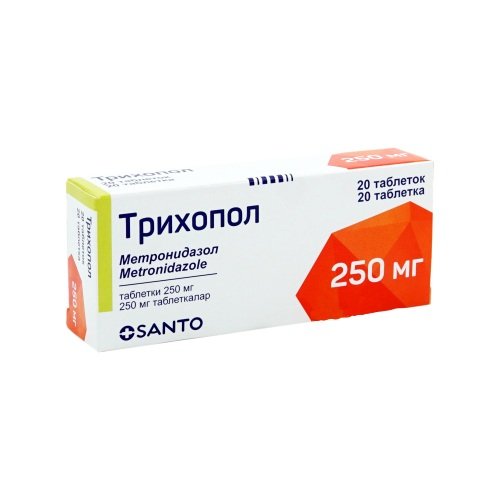
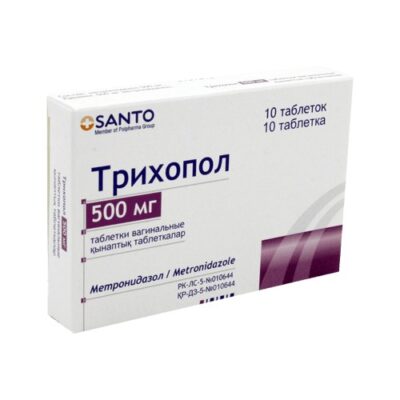
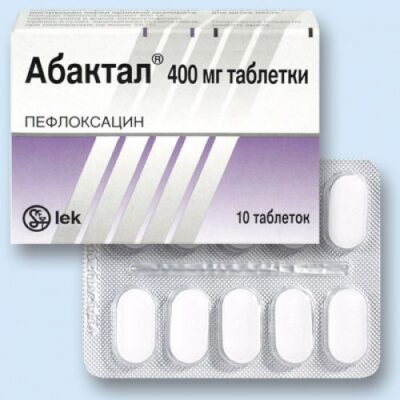
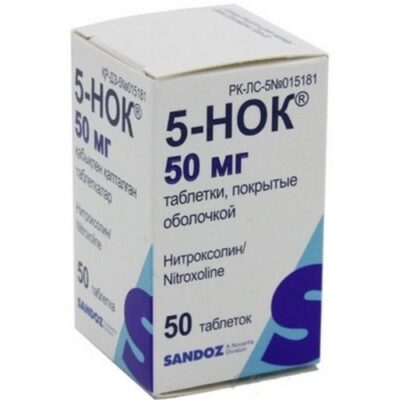
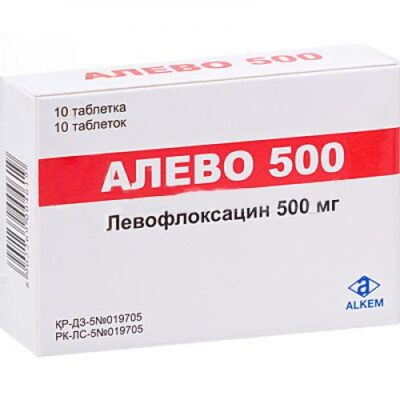
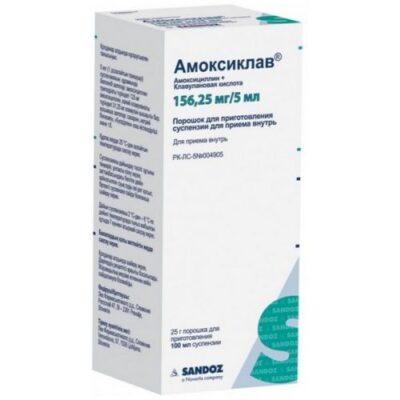
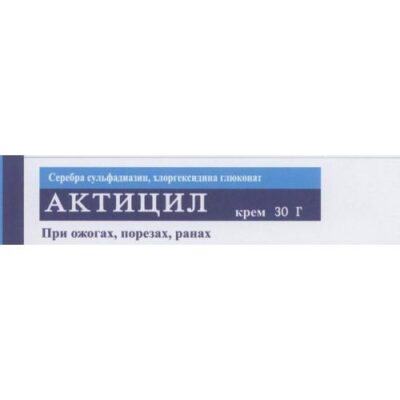
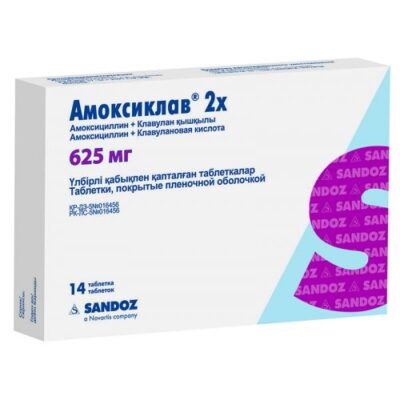
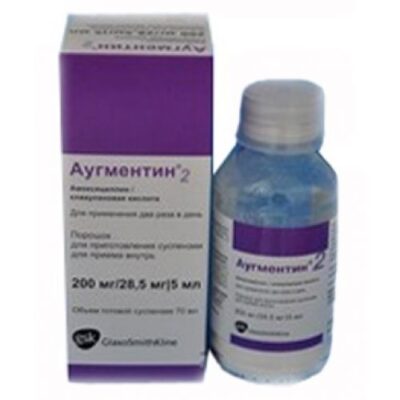
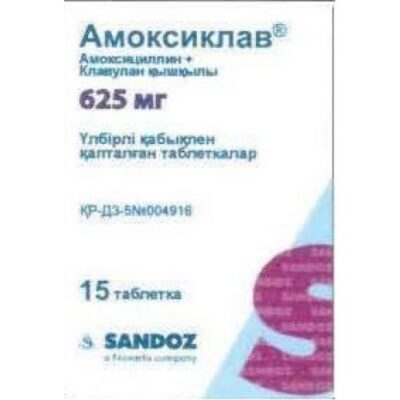
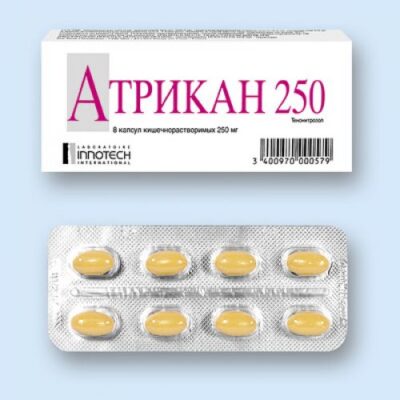







Reviews
There are no reviews yet.